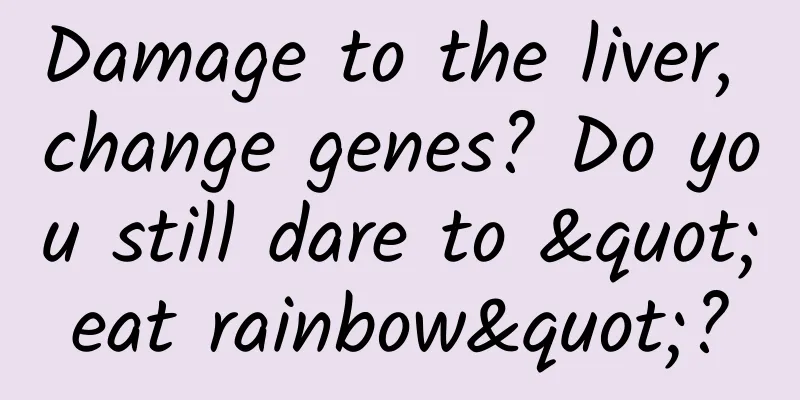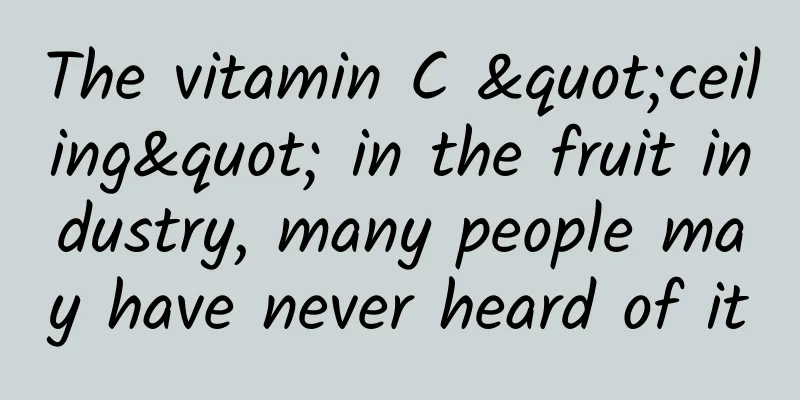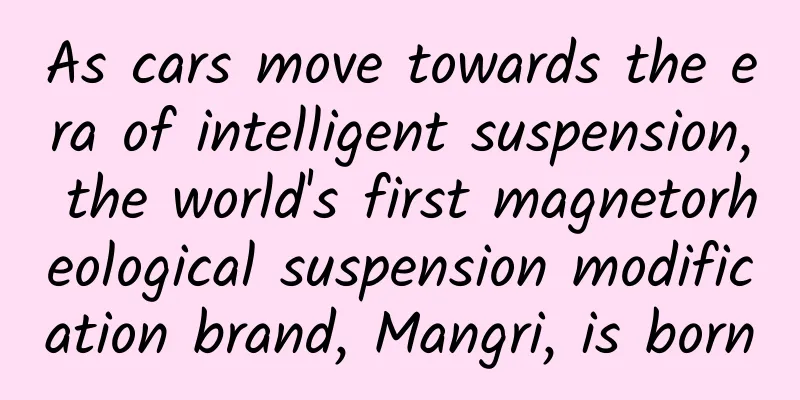Damage to the liver, change genes? Do you still dare to "eat rainbow"?

|
Snacks are really a magical thing. From children to adults and even the elderly, everyone can't get enough of all kinds of snacks. Many snack lovers even stock up a lot of candies, potato chips and dried fruits at home so they can eat them anytime and anywhere. Source | pixabay However, a recent piece of news scared them to death. It turned out that something happened to the snack Rainbow Candy that we are so familiar with! Some time ago, an American consumer filed a lawsuit in a California court, accusing the famous Mars company of producing rainbow candies that contained excessive amounts of titanium dioxide . It is said that excessive intake of titanium dioxide can cause damage to organs such as the brain and liver, and may even change human DNA. Source | Screenshot from CCTV Finance Can a small piece of candy really cause so much harm to the human body? Why does the titanium dioxide contained in Skittles make consumers so afraid? Let's take a look today. 1 The True Identity of Titanium Dioxide Revealed Titanium dioxide (chemical formula: TiO₂), commonly known as titanium dioxide , is an odorless, white powdery substance. It has strong adhesion and good opacity, and is widely used in the production of opacifiers and colorants in various fields. Source: Baidu Encyclopedia For example, in the medical field , titanium dioxide is often used in drug coatings for various oral preparations; in the industrial field , titanium dioxide is a common inorganic chemical product that can be used in the production of printing inks, plastics, coatings, toothpastes and cosmetics. In the food field , titanium dioxide is also widely used as a food additive. It can whiten food and can be used in foods such as cheese, candy, meat products and seasonings. In addition, it can also be used as a base material and mixed with other pigments to make the color of food brighter and purer. Source | pixabay In many countries, titanium dioxide is allowed to be used as a food additive. For example, the U.S. Food and Drug Administration (FDA) has designated titanium dioxide as a normal food additive, but stipulates that the amount used cannot exceed 1% of the total weight of the food. China's national food safety standards also stipulate that titanium dioxide can be added to food as a food colorant, but have clear requirements on the scope of use and dosage. Source: National Health Commission In May 2021, an assessment by the European Food Safety Authority (EFSA) stated that titanium dioxide may be genotoxic and listed some forms of titanium dioxide as suspected carcinogens. This shocked many people. The reason why Mars Group was sued in the news was because of consumers' doubts about safety. But in fact, the impact of titanium dioxide on human health and safety has not been verified by rigorous scientific experiments. In other words, long-term intake of titanium dioxide may cause genetic toxicity, or it may not. Mars Group also responded to the incident that Skittles produced in the United States comply with FDA regulations, and Skittles produced domestically also meet food safety standards and can be eaten with confidence. Source: Screenshot from China News Service In conclusion, from the perspective of existing laws, the presence of titanium dioxide in Skittles is not a big deal, but this news still aroused the vigilance and panic of some consumers: "So titanium dioxide has the potential to harm health?" In fact, there are many foods on the market that contain titanium dioxide. For example, Wrigley gum and M&M milk chocolate produced by Mars also contain titanium dioxide. If you are reading this article, you can eat less of these foods containing titanium dioxide. Some people may want to ask, how do you know if the food you buy contains titanium dioxide? It's very simple, just look at the ingredient list on the food packaging bag. Source: A shopping website In rainbow candy, titanium dioxide plays the role of a "colorant", which is what we often call pigment. Pigments are very common in food. Today, the editor will also give you some knowledge about pigments. 2 Titanium dioxide and its pigment family Pigments, as the name suggests, are substances that can add color to food. There are two types: natural pigments and artificial synthetic pigments. Most natural pigments are extracted from animal and plant tissues. For example, cochineal red is a natural pigment extracted from the dried female insects of cochineal, and its color is generally red or purple. Annatto orange is a natural pigment extracted from the seeds of the annatto tree, and its colors range from yellow to orange. Compared with artificial synthetic pigments, natural pigments are generally safer and can better restore the color of natural substances. The color is more natural, but it also has disadvantages, that is, it is more expensive and has a shorter shelf life . The coloring effect and stability are slightly poor, and it is easily affected by factors such as temperature, pH value, light, oxidation, etc., and there is a "color fading" phenomenon. It is very simple to judge whether the pigment in food is natural pigment. Most natural pigments are named after extracts, such as beet red, gardenia yellow, cochineal red, carmine, algae blue, etc. However, it should be noted that a small number of pigments look like natural pigments, but they are actually artificial synthetic pigments, such as lemon yellow and amaranth, etc., so you can pay more attention to them in your daily life. Source: A shopping website The raw materials of artificial synthetic pigments mainly come from chemical products, which are organic pigments obtained through chemical synthesis. Artificial synthetic pigments are cheap, stable in coloring, and have good colors . They are used in many foods. At present, there are many kinds of artificial synthetic pigments listed in China's food additives. In addition to the titanium dioxide mentioned above, there are also β-carotene, allura red, brilliant blue, indigo, etc. that are commonly seen in the packaging table. Source: pixabay In the ingredient list, if you see a color name such as "Allure Red" or the suffix "and its aluminum lake", it means it is an artificial synthetic color. Source: A shopping website Although natural pigments are safer, they should not be consumed too much, and the national standard also stipulates its usage. In fact, with the development of science and the food industry, the regulations on the use of pigments are also constantly updated. For example, butter yellow , a colorant commonly used in margarine in the past, is now banned because it can cause liver cancer in humans and animals. Source: pixabay Generally speaking, as long as the pigments are allowed by the national standard and added in strict accordance with the dosage, they are safe and guaranteed, and there is no need to worry too much. For children who are still growing and developing, if parents are more concerned, they can choose some foods without added pigments. |
>>: Why are there mirrors in elevators? 99% of people can't figure it out!
Recommend
Tesla Model S driver survives German autobahn crash
Despite the safety issues that still plague Tesla...
How many steps are involved in recovering a rocket?
I said our BeiDou system was built, and you said ...
Use Fly to initiate http requests in WeChat applet
The javascript running environment of WeChat appl...
Dialogue on Innovation—51CTO’s first developer competition has started!
/* Live to change the world Here, every work may ...
The 4 Essentials of Metaverse Marketing
The metaverse sounds grand. It feels like metaver...
There are two major pitfalls in copywriting that 91% of marketers cannot avoid. Are you one of them?
Marketing can be frustrating sometimes. You have ...
Tiangong already has Hall thrusters, so why is it necessary to transport chemical fuel up there?
At 14:22:22 on July 24, 2022, the Long March 5B Y...
SEO training case: Shanghai office leasing
Originally, the customer only wanted to optimize ...
iOS 11 installation rate has reached 59%, but it is lower than iOS 10 during the same period
On December 6, according to foreign media reports...
[Creative Incubation Program] Is the plot of "Jurassic World" realistic? Can we resurrect dinosaurs?
Author: Liu Sen Recently, Jurassic World 3 was re...
2018Q3 Wedding Photography Industry Advertising Report, Which Information Flow Ads Are More Popular?
As my country's economy is performing well ov...
After watching ofo’s new ad, I threw away the client’s brief!
Recently, ofo, the shared yellow bike company, re...
The Glory and Stupidity of the Three-Star Dynasty
In the past 2016, Samsung was in a quagmire. The ...
Hidden in the distant "heartland" of the Milky Way, mysterious galactic gas streams hide...
Hidden in the distant heart of the Milky Way, the...









